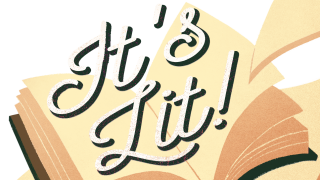
Nicole Russell discovered the power of paper tearing by serendipitous accident. A few years ago, when her younger sister was hurt and angry and needed a healthy way to vent, Russell told her to write down her feelings, empty out everything that was making her upset, and then rip up the page. The suggestion was a success. Her sister was relieved and—besides there being little scraps of paper to pick up afterward—the exercise actually helped their relationship.
Russell has since developed a rippable, shreddable, therapeutic journal, Write Here & Tear, to give other young people a sacred space to pour out their most honest thoughts and emotions—and mince them into oblivion.
“Oftentimes, the youth we serve don’t have privacy or a trusted emotional outlet, and the pandemic has seemed to exacerbate those issues,” said Russell, co-founder and executive director of the Precious Dreams Foundation, a New York City-based nonprofit that teaches self-soothing techniques to children navigating foster care and homeless shelters. “Although we encourage journaling, many teens have openly shared that they have a fear of their journals being found. I realized they needed to tear pages for privacy purposes.”
Psychologists have researched paper tearing as a positive emotional outlet for years. A 2012 study found that treating thoughts like material objects that can be destroyed or thrown away had a stronger impact than just imagining the thoughts were gone. Russell partnered with a WOC-owned creative design firm to conduct a case study on the benefits of paper tearing and how young people were coping with the pandemic. They discovered that 2 out of 3 young people they surveyed were already tearing. Russell, a paper tearer herself who says the ASMR sound is calming, has experienced the fear, anxiety and trauma of pandemic-related grief.
“I wanted to make sure there was a need for this product before I made the investment. I journal to stay sane. I lost a lot of family to COVID-19 and I journaled every single day so I could clear my mind and find rest at night,” she said. “Recently I’ve begun hosting virtual tear workshops with middle and high schools in predominantly Black and Brown communities and we tear together to self-soothe. We write about things we want to get rid of or release from our psyche. The tear sessions lower their stress levels and destroying the pages gives our young people a sense of control over their issues and their decision to conceal their secrets.”
A follow-up to Everything a Band-Aid Can’t Fix, Russell’s 2018 teen self-help book, Write & Tear has a hardcover to preserve the journal and perforated pages specially designed for tearing, so users get what they need from it, whether they want to document and save their thoughts or make their own clean slate for another day. Although she designed it for young people, she says adults can benefit from it, too.
“I focused mainly on the quality of the journal when I was in the creative process. There are no prompts to control the narrative. The journal has 200 blank, perforated pages and I used high-quality binding for all the sticklers who hate jagged edges, so you get a clean tear.” Most important, she adds, “The writer makes the rules based on their needs each day. Write what you need. Tear it into tiny pieces. And then watch it disappear.”
